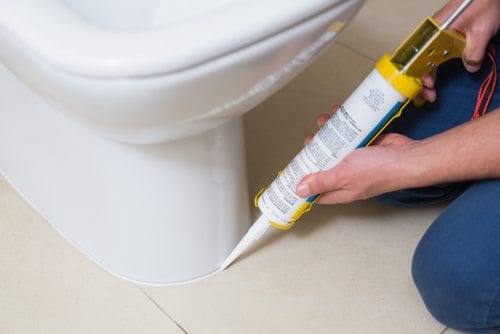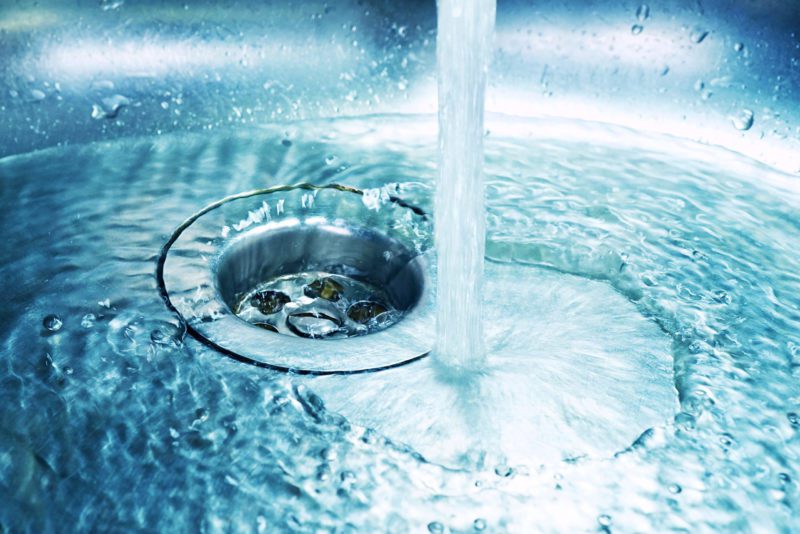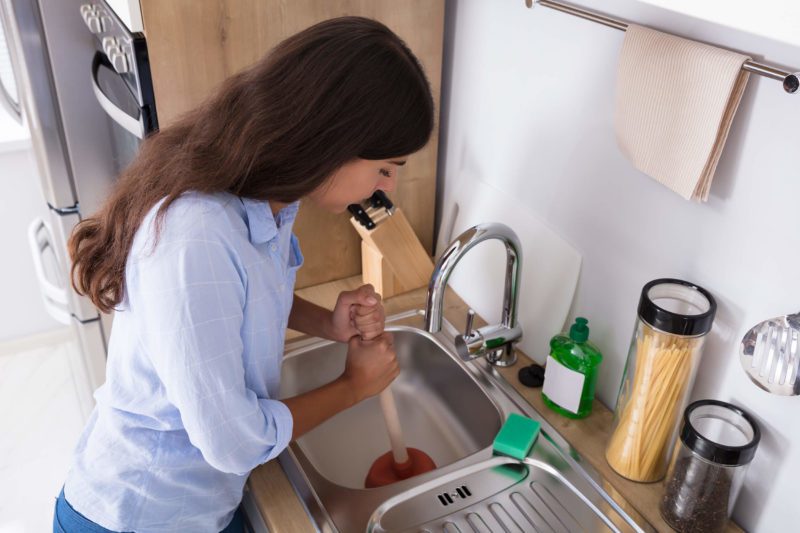Blog
What’s the Difference Between Grout and Caulk?

Grout and caulk are both essential substances in home improvement and renovation. It may seem like they perform the same functions because they are both adhesive. Still, there are a few significant differences between grout and caulk in terms of how they are contained, the preparation required for use, and the problems they each solve.
How Grout and Caulk Are Stored
Grout will almost always come in a bucket or tub-like container with a top lid.
Caulk, on the other hand, can vary slightly. Some caulk is contained within a squeezable tube made of plastic. Caulk can also come in larger cylindrical tubes made from cardboard.
Sometimes, caulk and grout are mixed, making grout caulk in a tube, which is easier to color match to current grout lines.
Grout and Caulk Preparation and Application
Before preparation, grout is just a powder, usually gray or brown. Water and adequate stirring are required to activate the adhesive properties in the grout. When the grout is ready, it is applied using a trowel designed specifically for grout.
Caulk does not require any sort of preparatory treatment. It can be used immediately after opening. However, you need a metal tool called a caulking gun to use a caulk tube.
What is Grout, and What is it Used For?
Grout is a mixture of water, cement, and sand. It is used to embed tiles and adhere them to surfaces. When properly mixed and applied, grout forms a water-resistant seal. Grout is similar to mortar but has a low viscosity and doesn’t include lime as an ingredient.
If you have any tile in your house, you see grout daily. Grout is the gray or white lining that fills the space between the tiles, which holds them securely in place. It’s used in all tiles in your bathroom, shower, backsplash, flooring, porch, or anywhere else tiles are used.
What is Caulk, and What is it Used For?

Caulk is a flexible paste that seals cracks, joints, and gaps less than one-quarter inch wide. It is airtight and waterproof. Caulk can be made with several different materials for different solutions. Caulk can be made with silicone, polyurethane, latex, butyl rubber, and more.
Caulk Preserving Indoor Air Quality and Energy Savings
Caulk is essential for keeping your home airtight and saving energy. It will be used on your window frames, in your attic, around your doors, and every joint that connects your home to the outside. The more airtight your home is, the more energy you can save, and the better your indoor air quality will be.
Caulk Sealing Plumbing Fixtures
Your home needs caulk for more than just staying airtight. Caulk is also crucial for anywhere water might leak into unwanted areas, specifically around plumbing fixtures—your faucets, sinks, wall seams, and backsplash seams should be caulked. If you hear terms like “sink grout” or “shower grout,” it typically refers to a grout caulk mixture.
When Should I Use Caulk vs. Grout?
Grout should be used as an adhesive, especially for tiling. Caulk should be used in wet areas to prevent water damage. So why do showers all use grout between tiles instead of caulk? When you combine grout, tiles, and backer board, the grout binds with the backer board to form a waterproof barrier, keeping moisture out of the walls.
Caulk’s big advantages over grout is its waterproof nature, flexibility, and replaceability. These attributes make caulk great for connecting angled seams. Because homes settle over time, grout in these angled seams often cracks and breaks. Conversely, caulk has some flexibility, and when settling is more than it can handle, caulk is much easier to remove and replace than grout.
Caulk should be used to connect tiled walls together and connect the tiles to the bathtub. Grout is sometimes used in this role but, unfortunately does not last as long as caulk for this application.
Another area that often gets grout when it should get caulk is your kitchen backsplash. Grout connecting your backsplash to your countertops is often slightly moved or jarred and gets broken, cracked, and removed from the seam.
Why not use caulk everywhere? Over time, say ten years or so, caulk tends to shrink, making it less ideal for shower and backsplash tiles. With the settling of houses, however, it’s often a good idea to replace your caulk every ten years anyway, and since caulk is easier to replace than grout, it’s a great solution for seams and connections. On parts of the house that don’t move, like a wall of tile, grout is the better, more affordable option.
Avoiding Mold with Caulk
Water tends to sit in the seams. Permeable grout can also become a safe haven for mold and mildew to grow. Certain caulk solutions advertise mold and mildew resistance for up to ten years. We recommend anti-mold caulk for applications that will see a lot of water exposure, especially in seams between shower tiles and the tub or in the seam between your backsplash and your kitchen counters, as water accumulates in those places.
Need Your Bathroom or Kitchen Re-Caulked?
Knowing the difference between grout and caulk is one thing, but proper application can be much trickier than it seems. If you suspect that you may need grout or caulk applied in your home, contact a professional at Apollo Home Heating, Cooling, and Plumbing to get the job done right.









